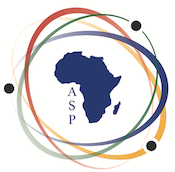Speaker
Description
Over the past decade, researchers have focused on developing affordable, durable, and efficient electrocatalysts for photoelectrochemical (PEC) water splitting as a potential remedy for the energy crisis. Among these, CuO has emerged as a promising photocathode material due to its unique physicochemical characteristics and narrow bandgap, making it one of the few photocatalysts capable of driving a highly active PEC hydrogen evolution reaction (HER) under simulated sunlight. This review thoroughly examines the latest progress in CuO-based photoelectrodes encompassing undoped, doped, and composite forms in the context of PEC water splitting. It also provides an in-depth discussion of the synthesis techniques, characterization methods, and key factors influencing each type. Additionally, separate sections address the PEC performance of CuO combined with two-dimensional materials, which represent a burgeoning class of nanocomposites in photocurrent generation. Special attention is given to CuO heterostructure photocathodes, with a critical analysis of their PEC water splitting applications, focusing on aspects such as electronic structure, defect states, bandgap, and hierarchical organization.
| Abstract Category | Materials Physics |
|---|
